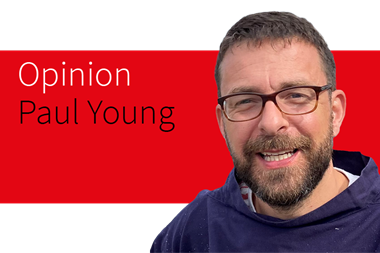On the eve of the GVNW symposium in Munich, Alexander Mahnke, president of the German risk management association and CEO Insurance (controlling & finance, financing) at Siemens, warns of the challenges of hardening commercial insurance rates, digitalisation and silent cyber
Speaking to StrategicRISK before giving his opening address at the symposium, Mahnke says: “If you look at the cost structure of insurance and also the fact that we might be facing – in some industries – hardening financial markets, the topic around how can automation and new technology help us and our partners to be more cost efficient becomes increasingly important.”
“Quite frankly, before we can put ourselves in a position to accept increasing premiums we would always need to ask for transparency on cost, both administrative and distribution costs,” he added.
“The opportunity to improve insurance business models and bring down the cost of capital is to all stakeholders’ benefit”, thought Mahnke.
“If you look at what we have in insurance it’s all about the data,” he said. “And who has the data? We do. And what do you need for the application for many of these new technologies, it’s the data.
“So, the insurance industry could be in the position to develop interesting new business models using the data of their clients, hand in hand with their clients.”
Could smart technologies improve insurance?
“While the insurance industry has traditionally been considered somewhat of a laggard in its approach to new technology, this is beginning to change”, says Mahnke.
“It’s safe to say this has already changed over the past years for two reasons,” he explained. “Everyone now understands that even the corporate insurance industry will be affected by new technologies - so no one can continue to claim this is something for retail insurance only and will not change our business and our business models.”
“And for many of the large insurance groups that have legacy problems when it comes to IT this is a great opportunity to solve these legacy problems,” he continued. “When you look behind the curtains it is mostly about budget. So, I see the budgets of some of these insurers improving dramatically, and rightly so, when it comes to IT costs and IT spending.”
Mahnke anticipated that digitalisation would be an important theme in the keynote speeches on days one and two of the conference, presented by Giulio Terzariol, CFO and member of the board at Allianz SE and Eric Andersen, Co-President of Aon plc, respectively.
Responding to a hardening market
Another topic he thinks will dominate discussions at the symposium is the hardening insurance market. “Especially the premium increases in property and BI insurance in some of our markets. Some insurers are really starting to push hard for more premium and some have also started to decrease capacity.”
“This is something that we have an opinion on, on behalf of our members,” he continued. “And it’s not about pushing back, it’s about trying to understand which part of the demands are well founded and in which way we can accommodate them, because we all know that in some areas corporate insurance rates might have been too low for insurers to make a profit margin. Therefore, if we are to have this discussion between corporate insureds and corporate insurers, the discussion needs to be had with a sense of proportion”, he added.
“In doing so we also need to understand in which ways we may not be able to accommodate those demands because we think before asking for more premium, some of the insurers should look at internal costs, administration and IT and also costs for their distribution channels.”
Silent cyber
When it comes to issues surrounding silent cyber, or non-affirmative cyber coverage, Mahnke notes the last 12 months have been significant with a number of markets reducing their cyber capacity or taking steps to exclude cyber risk from traditional lines of cover.
The high-profile Mondelez claim and resulting litigation between the confectionary giant and its insurer Zurich is one reason why silent cyber has gone up the agenda for many insurance carriers. The disputed claim, which was made under the organisation’s property policy, followed the NotPetya cyber attack in summer 2017.
UK insurance governance firm Mactavish also caused controversy when it questioned the value of cyber insurance in a report in November 2018. It considered eight “coverage flaws” which it claimed were prevalent across the insurance sector, claiming that “cyber insurance policies failed to meet the client needs for which they were sold.
Mahnke said it was important for insureds to have cover in place that responds as expected when a claim occurred. “If you talk with some of the more mature cyber markets in the US and the UK, the underwriters will tell you, ‘this is really not an issue for us’ because we know which risks are insured where,” he said.
“Whereas in some of the new markets - those that are new in the cyber space - they seem to have neglected that completely. When it comes to silent cyber it’s first and foremost an internal underwriting problem, and I will continue to point that out to insurers on behalf of our members.”




















No comments yet